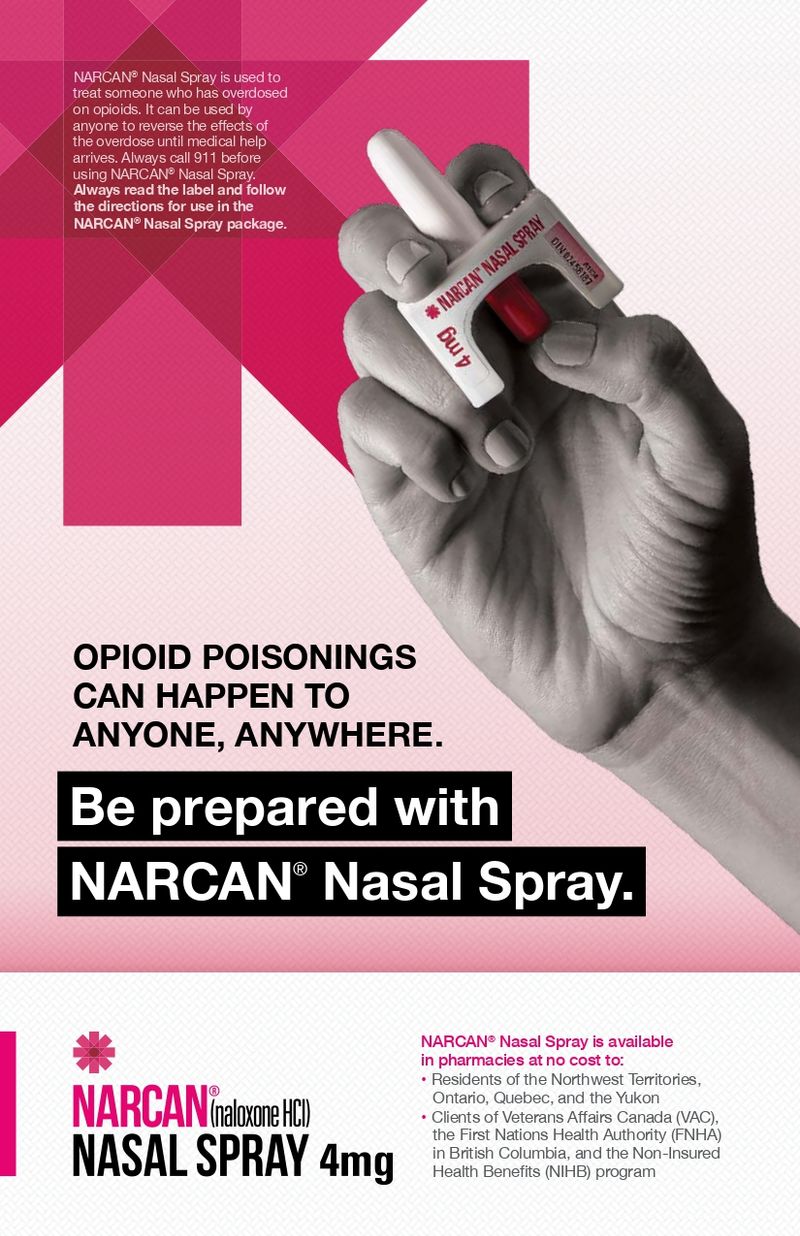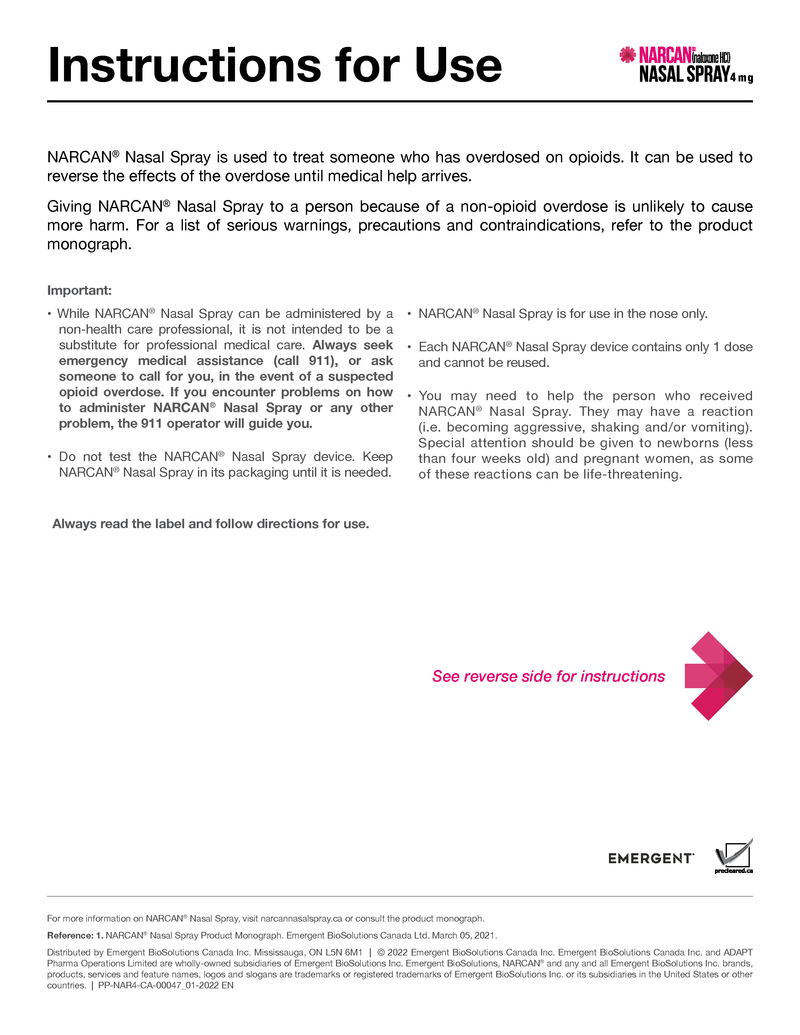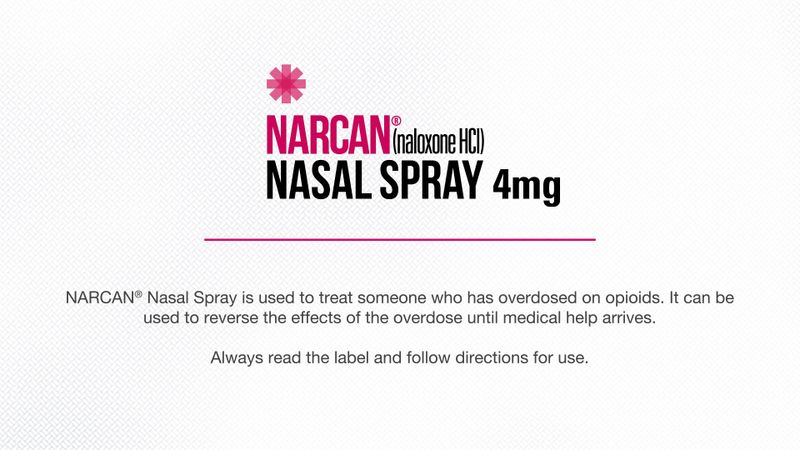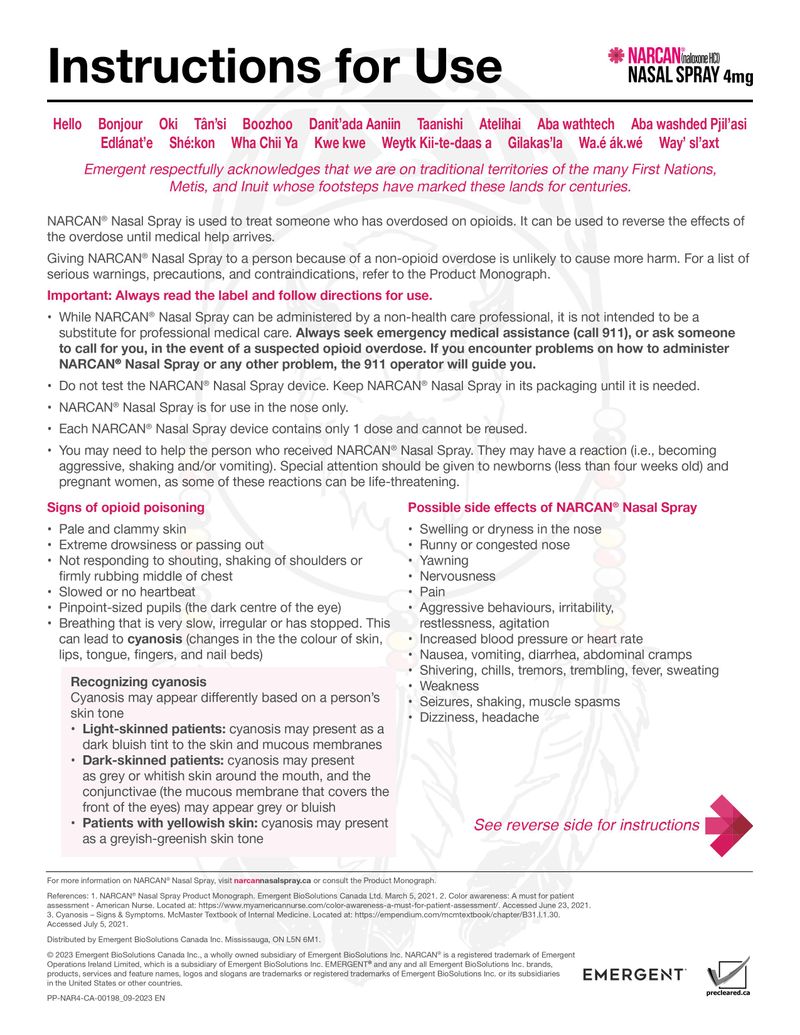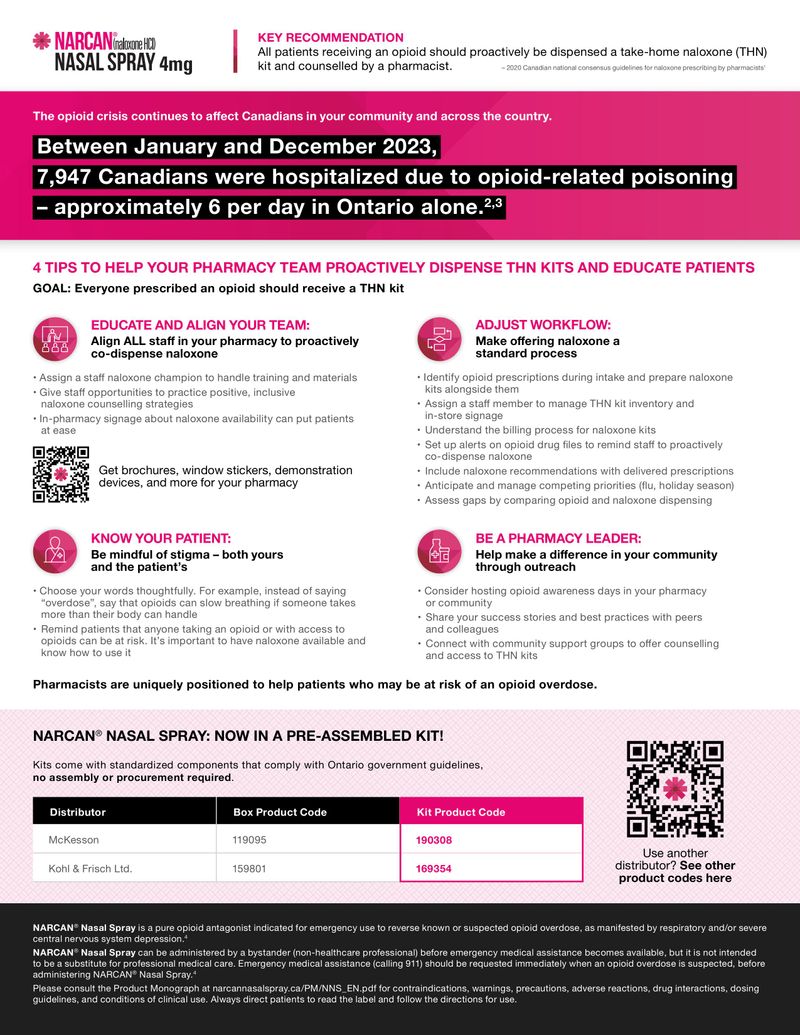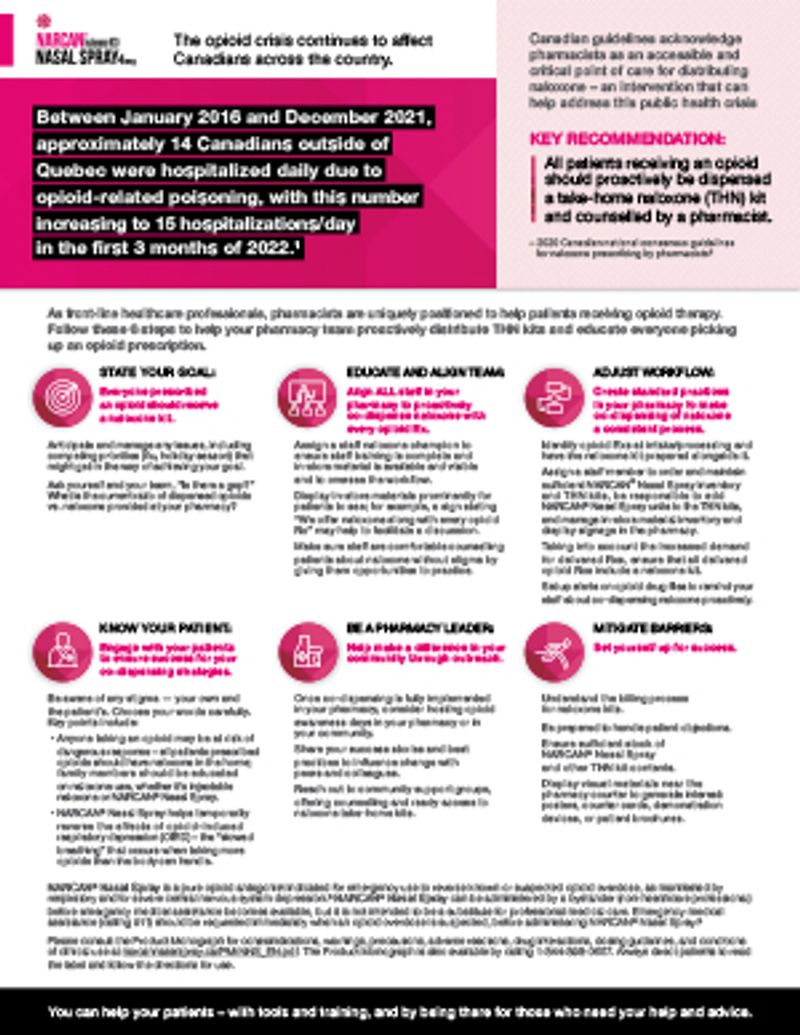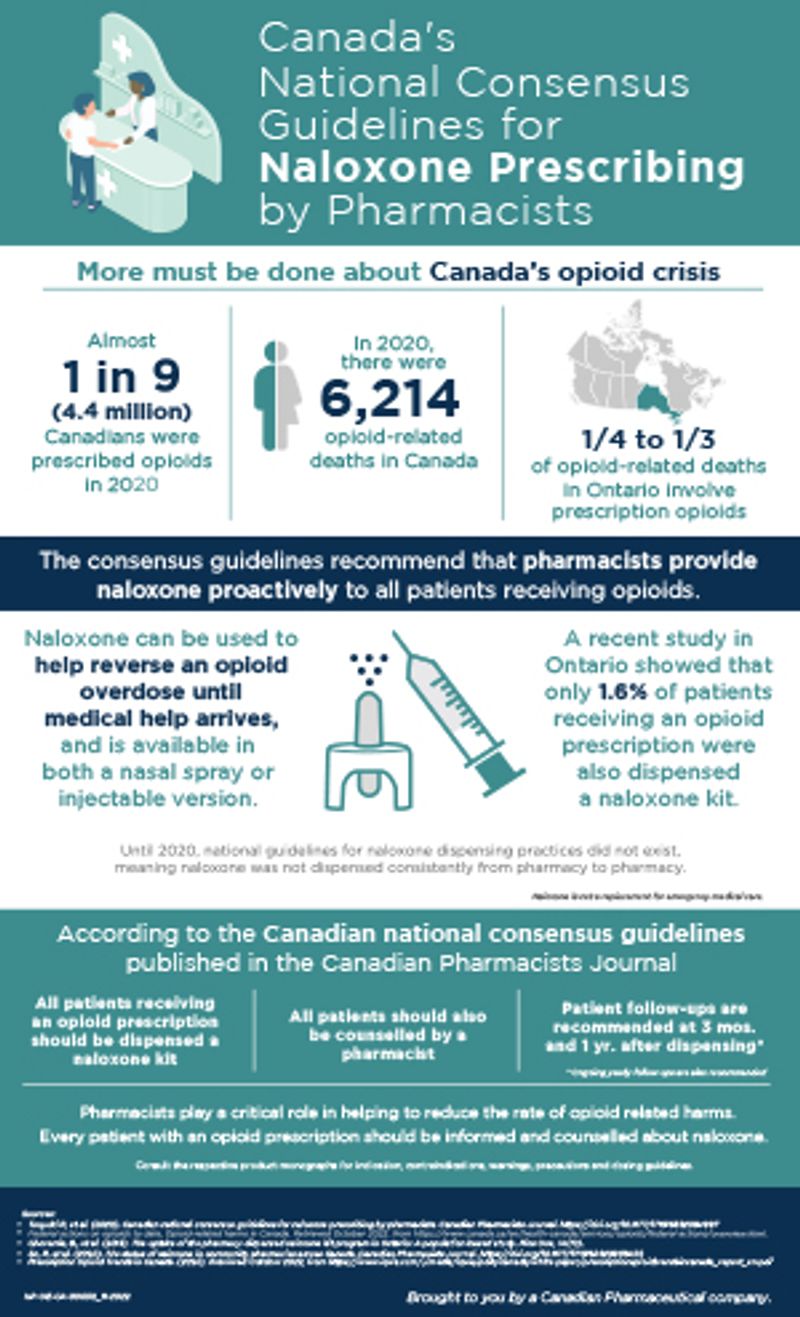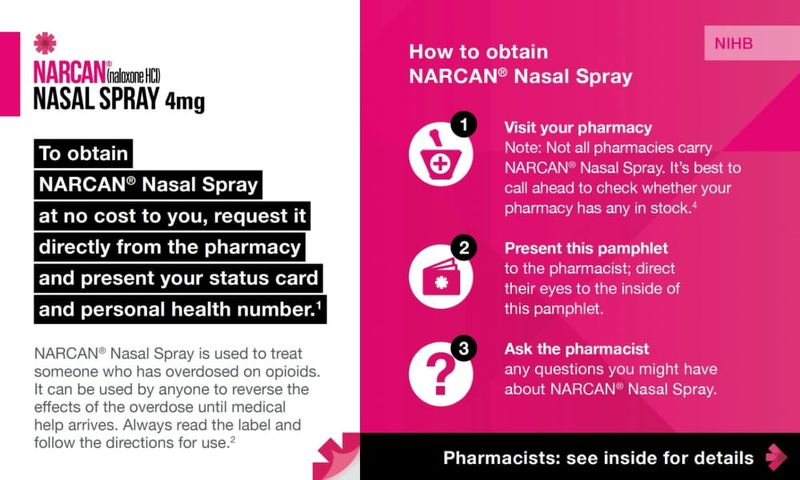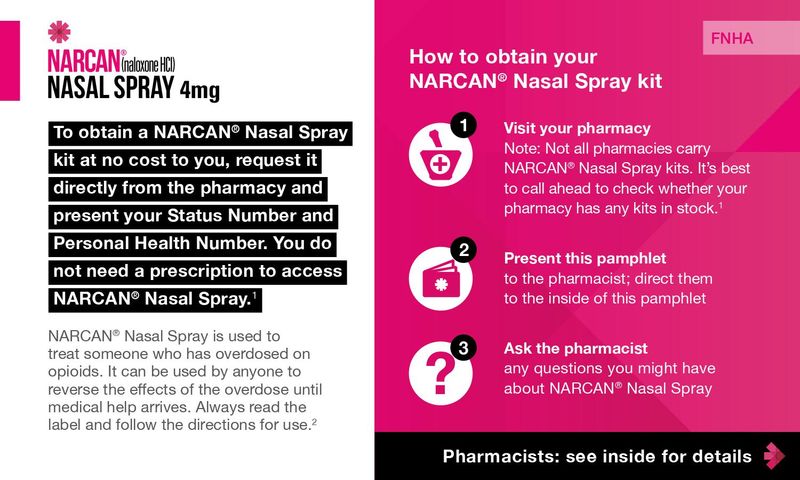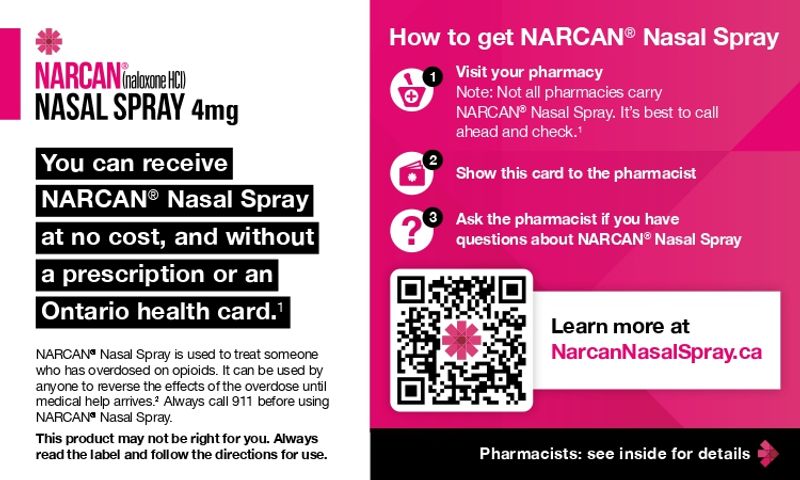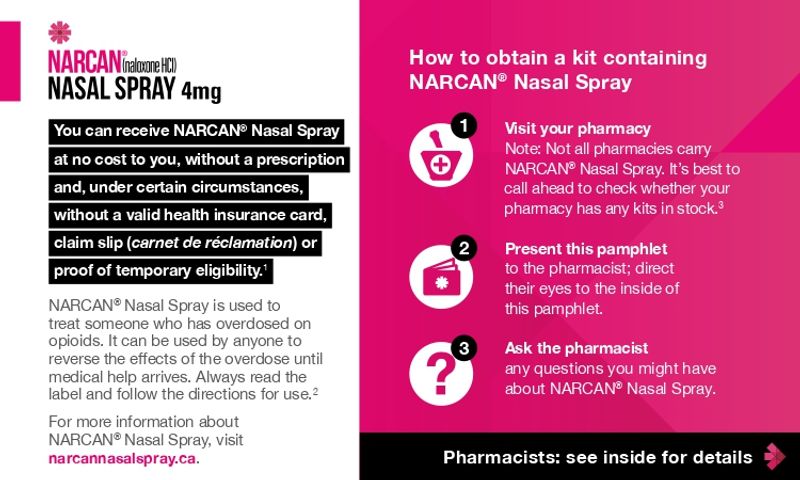The opioid crisis is having devastating effects on individuals, families and communities across Canada; you may have seen the effects in your own community.1 Anyone taking prescribed or illicit opioids is at risk for an overdose (i.e., opioid-induced respiratory depression).2 In fact, between January 2016 and December 2020, there were 24,671 hospitalizations for all opioid-related overdoses; that’s an average of nearly 14 per day.3 In 2020 alone, there were 5,215 hospitalizations for all opioid-related overdoses; 68% of those were accidental.3
The opioid crisis is a complex issue; while illegal drugs have caused many of the opioid-related harms, prescription drugs have also contributed.1 Despite patients intending to take their prescribed medication as instructed, there are a number of factors that can contribute to the risk of patients experiencing an overdose, such as alcohol or sedative use, or certain health conditions.2 With the high prescribing rates of opioids in Canada, many of your patients may be at risk.1 In 2018 alone, almost 1 in 8 Canadians had an opioid prescription.4
The Canadian National Consensus Guidelines for Naloxone Dispensing by Pharmacists recommend that ALL patients receiving an opioid prescription are also provided a take-home naloxone kit as a safety precaution.6,7 The kits are available in either a nasal spray form, like NARCAN® Nasal Spray, or an injection.7
You can help reduce the impact of the opioid crisis. By counselling and providing the necessary information to all your patients taking opioids, you can help reduce the number of opioid-related poisonings in your community.












